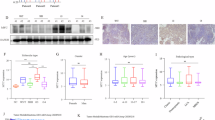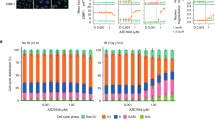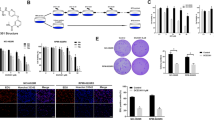Abstract
Chordoma, a malignant bone cancer, is highly resistant to conventional therapeutic approaches; this greatly limits radio- and chemotherapeutic options and disease management. In the present study, we investigated three patient-derived chordoma cell lines to elucidate the molecular mechanism of resistance to therapeutics. An in vitro high-throughput chemical screening assay and an in vivo xenograft model were used to identify novel chemosensitizers for chordoma. We found that patient-derived chordoma cell lines recapitulated disease phenotypes, which were highlighted by robust resistance to medical therapy manifested as lack of DNA damage accumulation. Mechanistically, the PARP DNA repair pathway was found to play a central role in this resistance. Chemical screening confirmed that PARP inhibitors could strikingly enhance temozolomide (TMZ) therapy in chordoma cells. Combining the FDA-approved PARP inhibitor, olaparib, with chemotherapeutics not only potentiated DNA damage accumulation, cell cycle arrest, and apoptosis in vitro but also suppressed chordoma xenograft expansion in vivo. We conclude that combining PARP inhibition with TMZ could be an effective therapeutic approach for the clinical management of chordoma.
Key messages
-
The PARP DNA repair pathway enhances chemoresistance in chordoma cells.
-
Combining PARP inhibitors with genotoxic agents induces chordoma cell cytotoxicity.
-
PARP inhibitor combining with temozolomide suppresses growth of chordoma in vivo.





Similar content being viewed by others
Explore related subjects
Discover the latest articles and news from researchers in related subjects, suggested using machine learning.References
Walcott BP, Nahed BV, Mohyeldin A, Coumans JV, Kahle KT, Ferreira MJ (2012) Chordoma: current concepts, management, and future directions. Lancet Oncol 13:e69–e76
Williams BJ, Raper DMS, Godbout E, Bourne TD, Prevedello DM, Kassam AB, Park DM (2013) Diagnosis and treatment of chordoma. J Natl Compr Cancer Netw 11:726–731
Chugh R, Tawbi H, Lucas DR, Biermann JS, Schuetze SM, Baker LH (2007) Chordoma: the nonsarcoma primary bone tumor. Oncologist 12:1344–1350
Fuller DB, Bloom JG (1988) Radiotherapy for chordoma. Int J Radiat Oncol Biol Phys 15:331–339
Debus J, Schulz-Ertner D, Schad L, Essig M, Rhein B, Thillmann CO, Wannenmacher M (2000) Stereotactic fractionated radiotherapy for chordomas and chondrosarcomas of the skull base. Int J Radiat Oncol Biol Phys 47:591–596
Schulz-Ertner D, Karger CP, Feuerhake A, Nikoghosyan A, Combs SE, Jäkel O, Edler L, Scholz M, Debus J (2007) Effectiveness of carbon ion radiotherapy in the treatment of skull-base chordomas. Int J Radiat Oncol Biol Phys 68:449–457
Sancar A, Lindsey-Boltz LA, Unsal-Kacmaz K, Linn S (2004) Molecular mechanisms of mammalian DNA repair and the DNA damage checkpoints. Annu Rev Biochem 73:39–85
Lu Y, Liu Y, Pang Y, Pacak K, Yang C (2018) Double-barreled gun: combination of PARP inhibitor with conventional chemotherapy. Pharmacol Ther 188:168–175
Holohan C, Van Schaeybroeck S, Longley DB, Johnston PG (2013) Cancer drug resistance: an evolving paradigm. Nat Rev Cancer 13:714–726
Sarkaria JN, Kitange GJ, James CD, Plummer R, Calvert H, Weller M, Wick W (2008) Mechanisms of chemoresistance to alkylating agents in malignant glioma. Clin Cancer Res 14:2900–2908
Bajrami I, Kigozi A, van Weverwijk A, Brough R, Frankum J, Lord CJ, Ashworth A (2012) Synthetic lethality of PARP and NAMPT inhibition in triple-negative breast cancer cells. EMBO Mol Med 4:1087–1096
Cheng H, Zhang Z, Borczuk A, Powell CA, Balajee AS, Lieberman HB, Halmos B (2013) PARP inhibition selectively increases sensitivity to cisplatin in ERCC1-low non-small cell lung cancer cells. Carcinogenesis 34:739–749
Pang Y, Lu Y, Caisova V, Liu Y, Bullova P, Huynh TT, Zhou Y, Yu D, Frysak Z, Hartmann I, Taïeb D, Pacak K, Yang C (2018) Targeting NAD+/PARP DNA repair pathway as a novel therapeutic approach to SDHB-mutated cluster I pheochromocytoma and paraganglioma. Clin Cancer Res 24:3423–3432
Liu X, Nielsen GP, Rosenberg AE, Waterman PR, Yang W, Choy E, Sassi S, Yang S, Harmon DC, Yang C, Schwab JH, Kobayashi E, Mankin HJ, Xavier R, Weissleder R, Duan Z, Hornicek FJ (2012) Establishment and characterization of a novel chordoma cell line: CH22. J Orthop Res 30:1666–1673
Scheil S, Brüderlein S, Liehr T, Starke H, Herms J, Schulte M, Möller P (2001) Genome-wide analysis of sixteen chordomas by comparative genomic hybridization and cytogenetics of the first human chordoma cell line, U-CH1. Genes Chromosomes Cancer 32:203–211
Owen JH, Komarck CM, Wang AC, Abuzeid WM, Keep RF, McKean EL, Sullivan S, Fan X, Prince MEP (2018) UM-Chor1: establishment and characterization of the first validated clival chordoma cell line. J Neurosurg 128:701–709
Yang C, Iyer RR, Yu ACH, Yong RL, Park DM, Weil RJ, Ikejiri B, Brady RO, Lonser RR, Zhuang Z (2012) Beta-catenin signaling initiates the activation of astrocytes and its dysregulation contributes to the pathogenesis of astrocytomas. Proc Natl Acad Sci U S A 109:6963–6968
Chou TC (2010) Drug combination studies and their synergy quantification using the Chou-Talalay method. Cancer Res 70:440–446
Liu Y et al (2019) Targeting IDH1-mutated malignancies with NRF2 blockade. J Natl Cancer Inst
Lu Y, Liu Y, Yang C (2017) Evaluating in vitro DNA damage using comet assay. J Vis Exp
Helleday T, Petermann E, Lundin C, Hodgson B, Sharma RA (2008) DNA repair pathways as targets for cancer therapy. Nat Rev Cancer 8:193–204
N. Kondo, A. Takahashi, K. Ono, T. Ohnishi, DNA damage induced by alkylating agents and repair pathways. J Nucleic Acids 2010, 543531 (2010), 1, 7
Presneau N, Shalaby A, Ye H, Pillay N, Halai D, Idowu B, Tirabosco R, Whitwell D, Jacques TS, Kindblom LG, Brüderlein S, Möller P, Leithner A, Liegl B, Amary FM, Athanasou NN, Hogendoorn PCW, Mertens F, Szuhai K, Flanagan AM (2011) Role of the transcription factor T (brachyury) in the pathogenesis of sporadic chordoma: a genetic and functional-based study. J Pathol 223:327–335
Matsuoka S, Ballif BA, Smogorzewska A, McDonald ER, Hurov KE, Luo J, Bakalarski CE, Zhao Z, Solimini N, Lerenthal Y, Shiloh Y, Gygi SP, Elledge SJ (2007) ATM and ATR substrate analysis reveals extensive protein networks responsive to DNA damage. Science 316:1160–1166
Hannay JA et al (2007) Rad51 overexpression contributes to chemoresistance in human soft tissue sarcoma cells: a role for p53/activator protein 2 transcriptional regulation. Mol Cancer Ther 6:1650–1660
Tsai MS, Kuo YH, Chiu YF, Su YC, Lin YW (2010) Down-regulation of Rad51 expression overcomes drug resistance to gemcitabine in human non-small-cell lung cancer cells. J Pharmacol Exp Ther 335:830–840
Lu Y, Kwintkiewicz J, Liu Y, Tech K, Frady LN, Su YT, Bautista W, Moon SI, MacDonald J, Ewend MG, Gilbert MR, Yang C, Wu J (2017) Chemosensitivity of IDH1-mutated gliomas due to an impairment in PARP1-mediated DNA repair. Cancer Res 77:1709–1718
Pang Y, Liu Y, Pacak K, Yang C (2019) Pheochromocytomas and paragangliomas: from genetic diversity to targeted therapies. Cancers (Basel) 11
Tatar Z, Thivat E, Planchat E, Gimbergues P, Gadea E, Abrial C, Durando X (2013) Temozolomide and unusual indications: review of literature. Cancer Treat Rev 39:125–135
Abdel-Rahman O, Fouad M (2015) Temozolomide-based combination for advanced neuroendocrine neoplasms: a systematic review of the literature. Future Oncol 11:1275–1290
Ji Y, Vogel RI, Lou E (2016) Temozolomide treatment of pituitary carcinomas and atypical adenomas: systematic review of case reports. Neurooncol Pract 3:188–195
Anderson S, Aghajanian C (2005) Temozolomide in uterine leiomyosarcomas. Gynecol Oncol 98:99–103
Audeh MW, Carmichael J, Penson RT, Friedlander M, Powell B, Bell-McGuinn KM, Scott C, Weitzel JN, Oaknin A, Loman N, Lu K, Schmutzler RK, Matulonis U, Wickens M, Tutt A (2010) Oral poly(ADP-ribose) polymerase inhibitor olaparib in patients with BRCA1 or BRCA2 mutations and recurrent ovarian cancer: a proof-of-concept trial. Lancet 376:245–251
Gelmon KA, Tischkowitz M, Mackay H, Swenerton K, Robidoux A, Tonkin K, Hirte H, Huntsman D, Clemons M, Gilks B, Yerushalmi R, Macpherson E, Carmichael J, Oza A (2011) Olaparib in patients with recurrent high-grade serous or poorly differentiated ovarian carcinoma or triple-negative breast cancer: a phase 2, multicentre, open-label, non-randomised study. Lancet Oncol 12:852–861
Acknowledgments
This research was supported by the Intramural Research Program of the NIH, National Cancer Institute (NCI), Center for Cancer Research (CCR).
Author information
Authors and Affiliations
Contributions
XC, YL, and YL designed and performed the study, analyzed the data, and drafted the manuscript. HS, WZ, and DD performed the study and analyzed the data. YZ, JC, SH, JJ, and QW analyzed the data. Corresponding authors DMP and CY contributed to the conceptual design of the study, interpreted the data, and critically revised the manuscript. All authors have given final approval and agree to be accountable for all aspects of the work.
Corresponding authors
Ethics declarations
Conflict of interest
The authors declare that they have no conflicts of interest.
Additional information
Publisher’s note
Springer Nature remains neutral with regard to jurisdictional claims in published maps and institutional affiliations.
Rights and permissions
About this article
Cite this article
Cao, X., Lu, Y., Liu, Y. et al. Combination of PARP inhibitor and temozolomide to suppress chordoma progression. J Mol Med 97, 1183–1193 (2019). https://doi.org/10.1007/s00109-019-01802-z
Received:
Revised:
Accepted:
Published:
Issue Date:
DOI: https://doi.org/10.1007/s00109-019-01802-z
Keywords
Profiles
- Yanxin Lu View author profile
- Yiqiang Zhou View author profile




